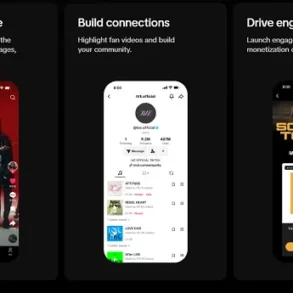
By Prof. Nishit Narang, Associate Professor, BITS Pilani Work Integrated Learning Programmes (WILP) division
Social networks have already become a part of our everyday life. And the way the world is progressing, it is perhaps only a matter of time before intelligent and smart devices will become connected via a social network of their own. While there are many advantages of being connected via social networks, it also introduces the participants to a world of deceit.
As such, trust becomes an important aspect of operating social networks in an ethical manner. Accordingly, let’s explore the topic of trust and trust management in the context of social networks for humans and smart devices alike, and how it will determine the future of social networks.
Why are Online Social Networks (OSNs) so popular?
While the first two evolutions of the Internet were primarily driven by the need to connect computing devices and enable a variety of e-commerce and e-productivity services, the third generation of the Internet is characterized by the proliferation of online social networks. The introduction of smartphones provided individuals with a handheld, portable, and powerful computing device, something that could be used for a variety of purposes.
This, coupled with an increasingly busy modern life wherein some of us find it difficult to meet and connect in the physical world, led to the evolution of online social network platforms. The OSN platforms offered an easy way to e-connect in a virtual world, with smartphones acting as the enablers. It is no wonder that the OSN platforms, such as Facebook, LinkedIn, Twitter, and Instagram, quickly became the modus operandi for many of us to connect and collaborate, to fulfil both our personal and professional needs.
What trust challenges do OSNs have?
It is often said that in any social network, “Trust is the basis of all interactions.” In other words, the greater the level of trust one has in another individual, the more they are likely to interact with that person. In a physical world, the traditional methods of meet and greet offer a variety of ways in which people judge each other. In fact, many of us seem to be adept at forming a perception of each other in only a few meetings. So, what is it that primarily helps us to do this and decide the kind of company we would like to keep (or avoid)?
The answer likely lies in a combination of social, psychological, and behavioural cues that help humans to assess each other. Some of the common factors used by human beings to form a perception of each other include communication skills, body language, values, beliefs, behaviours and actions, interests and hobbies, social status and background, and appearance/grooming. These factors interact in complex ways, with individual preferences playing a significant role in creating the perceived trustworthiness of another person,
something that eventually influences how an individual interacts with the other. In simple words, the trust an individual has in the other person is often key in their making, keeping, or disassociating from a social connection, as well as deciding the level of interaction.
In an OSN platform too, humans essentially make use of a similar combination of social, psychological, and behavioural cues to decide whether they would create, retain, or delete one or more of their social ties, and the level of interaction they would like to maintain. Unfortunately, in the absence of physical meet-and-greet procedures, a lot of the factors (e.g. appearance, body language, etc.) are either difficult to assess or can be easily faked. This triggers difficulty in assessing the trustworthiness of the other person, making it difficult to decide on the status of a social tie and to keep the right level of interaction.
Should we be worried about assessing trustworthiness when making online social ties?
Trustworthiness assessment is key to making social ties, whether in the physical world or the virtual cyberspace via OSNs. Social ties created with malicious and untrustworthy individuals can lead to information falling into the wrong hands and have the potential to be used for a variety of (cyber) crimes and attacks. OSNs are often used as a platform for various collaborative services, whether personal (e.g. Facebook) or professional (e.g. LinkedIn). A lack of trust in one or more individuals is a severe hindrance in achieving online collaboration.
However, trust assessment is an inherently complex task. For one, as stated above, trust is subjective and not objective. It depends on the complex interplay of a variety of factors and results in a subjective assessment that is difficult to quantify. Further, trustworthiness is often time-varying, meaning that the assessment can change with time. Over time, trust can grow reduce or remain stable. Trust is also topic-dependent. As an example, one’s trust in another individual on the topic of movies may be different compared to the trust in the same individual on the topic of automobiles. Even in a trustworthy relationship, there is a risk of betrayal, something better known as an opportunistic attack. All of this makes trustworthiness assessment quite challenging when making online social ties.
Will the problem of trust assessment become even more complex in the future?
As the Internet continues to evolve, the latest augmentation to the Internet family is the addition of smart devices. We also know this as the Internet of Things (or IoT), wherein smart devices like automotive, and consumer devices (e.g. coffee machines, light bulbs, etc.), industrial devices (e.g. sensors, robotic arms, etc.) connect via the internet to enable automation in consumer and industrial services.
Most IoT solutions today revolve around using cloud-based backend services as a central intelligence and data collection centre. However, accessing the cloud platform over an intermediary network service has its associated higher latency for smart device applications. Many applications involving smart IoT devices need low-latency decision-making. An example is the accident-prevention use case in autonomous self-driving connected cars, wherein decisions have to be made in quick time, making cloud-based solutions difficult to implement. This kind of application needs to use faster, lower latency, and machine-to-machine (or M2M) communication via a form of a virtual mesh network created between the smart devices.
As smart devices start to connect over their virtual networks, it marks the first step towards device collaboration. As devices become smarter, coupled with AI-based behavioural models imparted to them, devices will soon start to behave more human-like. It is perhaps a matter of time before devices start to form their own social ties within their social networks, with the goal of collaborating and implementing low-latency collaborative applications. In the research community, this idea is better known as the Social Internet of Things (or Social IoT or SIoT). The problem of trustworthiness assessment that exists in OSNs finds a similar extension in SIoT. Thus, it would only be right to say that with the next generation of social networks, the problem of trust assessment will likely become more complex.
How can the trustworthiness assessment problem be solved for social networks?
As mentioned above, the problem of trustworthiness assessment that exists in OSNs also finds a similar extension in SIoT. To overcome this challenge, trust models and trust management frameworks are being developed by the R&D community. The topic of trust modelling, trust mining, and tie strength measurement in OSNs is a vast and well-researched area that has seen focus for almost two decades now. Similarly, online service-based networks have their trust models, including models for e-commerce platforms that offer online services. These models often use a system of ratings or opinions and are backed by a cloud-hosted recommender system.
In the last decade, IoT networks have seen similar research in trust modelling, with a focus towards developing a system for trustworthiness assessment of IoT devices. SIoT trust models have immensely borrowed ideas from OSN trust models due to the social nature of the nodes in either kind of network. However, while OSNs are often backed by huge computational capability, courtesy of the cloud platforms, SIoT networks involve resource-constrained IoT devices. As such, complex trust models built for OSN networks are often not possible to use with resource-constrained IoT devices. Building Trust Models for Social IoT networks is, therefore, a separate research area that is finding a lot of focus from the research community.
What kind of trust models can be used with SIoT networks?
SIoT networks connect resource-constrained devices, which often have only limited system resources. Accordingly, the trust models have to be built using simpler techniques that do not require huge system resources in terms of storage, computing, or power. Recommendation-based models used in OSN and online service or content-delivery networks process large amounts of dynamic transactions and associated ratings to deduce trust. While such models are known to have good accuracy, they require higher system resources for information processing and thus, might be difficult to adapt to all types of SIoT networks.
An alternate method involves using the social network structure that is created from the existing social ties of devices to derive the trustworthiness of connected devices. These models are called graph-based models and make use of the social network graph structure to assess which devices are more trustworthy than others. Since graph structures change only less frequently and are therefore more static (or semi-static), the associated trust model is not taxing on the IoT devices’ system resources. However, the accuracy of graph-based trust models may be relatively less compared to trust models that are based on a dynamic system of ratings or recommendations. Accordingly, some trust models created for SIoT networks involve a careful mix of static and dynamic techniques to balance accuracy and resource needs and are thus known as hybrid models.
Relationship-based trust modelling is another radical idea that is leveraged in the creation of SIoT trust models. This involves identifying relationships among devices i.e. devices that either have the same owner, come from the same production line, are used in the same neighbourhood, or have some similar affiliation. A trust factor is associated with each such relationship, and used in a mathematical model that helps IoT devices identify other devices that can be trusted, based on such relationships.
While the research community is continuously working to identify and explore diverse and exciting ideas for SIoT trust modelling, the success of any technique depends on the type of social network and its associated characteristics. Some models may suit better for certain types of SIoT networks, based on device types and their use cases. As the SIoT space evolves, we will likely observe novel use cases for social networks and newer trust models. Needless to say, the road ahead for social networks will surely be an intriguing one!
This post was originally published on this site be sure to check out more of their content







